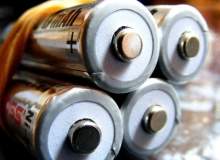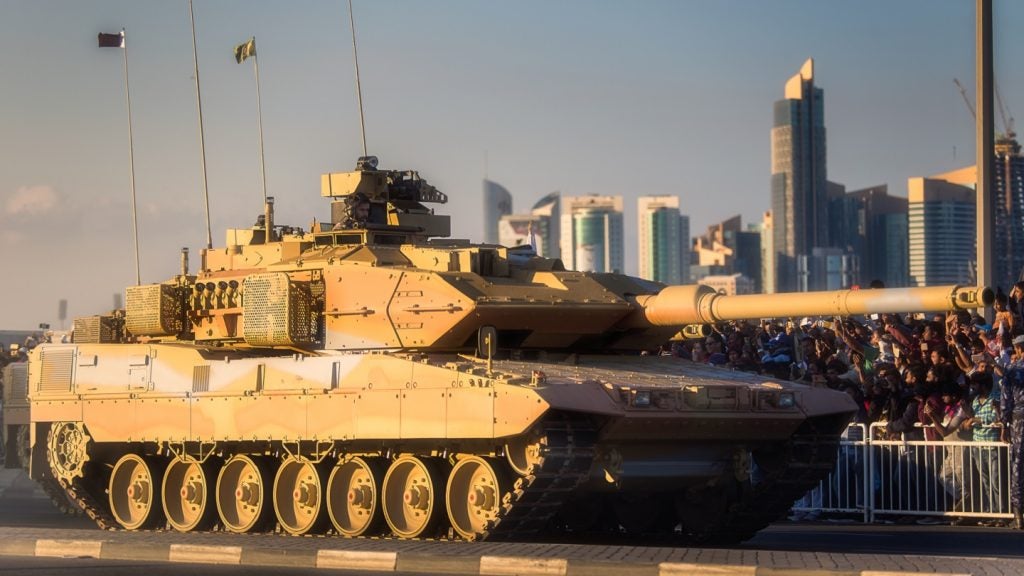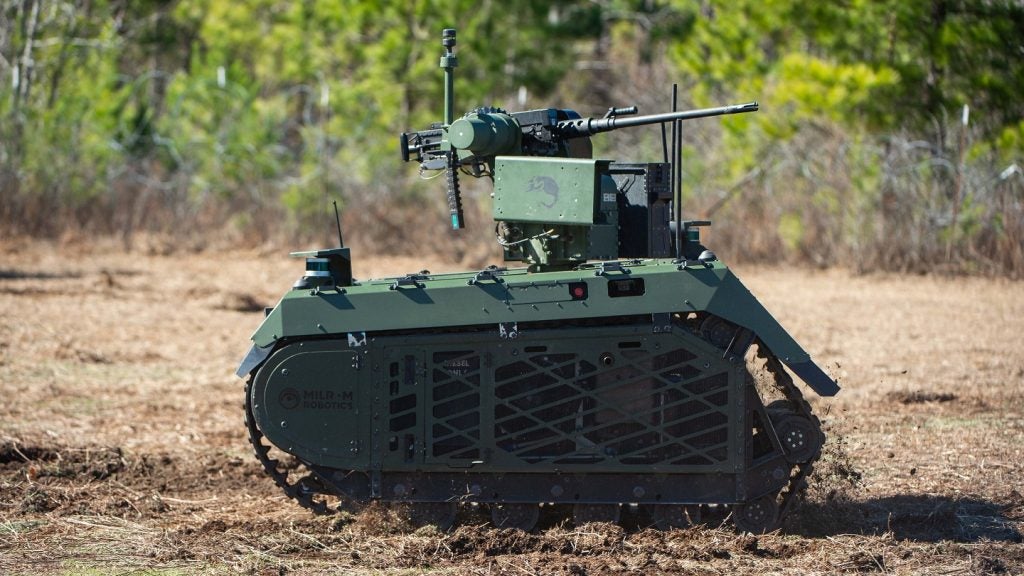

When the military unveils a new infra-red sight system, night-vision goggles or communication device, how they are powered is often an afterthought. What’s not thought about at the time is how many batteries a soldier will have to carry to power the technology on the battlefield. The problem is, the more technologically advanced the soldier becomes, the more batteries he has to carry.
Over recent years the introduction of new technology has overburdened the soldier with batteries. Soldiers, depending on their mission, could carry nearly 30 pounds of batteries to keep their equipment working. Now scientists across the world are looking at ways to decrease the soldier’s dependency on multiple batteries, and ultimately lighten their loads through advanced battery chemistry.
Dr. Cynthia Lundgren, a chemist who heads the Electrochemistry Branch at the US Army Research Laboratory in Maryland, tells us about her team’s research into battery technology and what she thinks is the future for power systems. Dr. Lundgren has worked in industry for 17 years and began her career at the Army Research Lab in 2005.
Grant Turnbull: What is the main focus for the Electrochemistry Branch?
Dr. Cynthia Lundgren: The research in my branch is mostly associated with energy storage and conversion with the goal of lightening the soldier’s load and decreasing the logistic resupply. Our research covers batteries for munitions, the soldier, vehicles, grid storage and pulse power platforms.
See Also:
GT: What are the current challenges the soldier faces when it comes to battery technology?
CL: Power and energy is usually an afterthought; people put a system together and only later do they worry about how they’re going to power it. All the advances in soldier technology – their night vision goggles, their sights – everything needs power so the more capability we give them the more power they need.
How well do you really know your competitors?
Access the most comprehensive Company Profiles on the market, powered by GlobalData. Save hours of research. Gain competitive edge.

Thank you!
Your download email will arrive shortly
Not ready to buy yet? Download a free sample
We are confident about the unique quality of our Company Profiles. However, we want you to make the most beneficial decision for your business, so we offer a free sample that you can download by submitting the below form
By GlobalDataUS Special Forces units could soon be getting their hands on stealth motorbikes, thanks to new technology being developed in the US.
As a result, soldiers can carry anywhere between ten and 30 pounds of batteries depending on what their role is in the platoon. That’s a significant weight. Additionally, commercial batteries do not really meet the military’s needs; our operating temperature range is minus 45 to plus 70 [degrees Fahrenheit]. Commercial batteries really can’t operate at those [temperatures] extremes very well.
Batteries also need to be safe in a ballistic environment and, if you’re aware of some of the lithium-ion battery fires, that’s a concern.
GT: What research are you conducting to help overcome these challenges?
CL: We have several major programmes, but our biggest is the five-volt (5V) battery programme. With the 5V battery we are hoping that the increase in voltage with this battery will give us an increased energy density of about 30%, which is significant especially for radio operators who are sometimes carrying 30 pounds of battery. So if you can lower their weight by ten pounds that’s pretty significant.
GT: How do 5V batteries differ from existing technology?
CL: Most lithium-ion batteries operate around the 3.6V to 4.2V range. When you get over 4.5V the problem is the stability of the electrolyte with the cathode, so [for] anything higher than 4.5V the cathode and the electrolyte react and you lose energy density every time you recharge. We’ve focused our research on understanding that interface which is called the solid electrolyte interphase.
GT: Is the 5V battery mainly for soldier systems?
CL: It is, although there’s interest in vehicle batteries for that as well but certainly the weight savings would be most significant for the soldier.
GT: What other projects are you currently working on?
CL: We have a group doing advanced battery chemistry, looking beyond lithium-ion, which includes lithium-sulphur batteries, sodium batteries and magnesium metal hybrid batteries. We have some different lithium-ion chemistries we are looking at and so all of these have the potential to be better than lithium-ion.
We consider lithium-ion to be a fairly mature technology from a research perspective; the 5V work is the culmination of a lot of work.
We had a group researching primary (non-rechargeable) batteries but we have refocused that into advanced rechargeable battery chemistries because the army is using less and less primary batteries, although they still use a significant amount.
GT: So more batteries for the soldier are now rechargeable?
CL: When I first joined the Army Research Lab in 2005 and we were in Iraq, there was very little use of rechargeable batteries. The soldiers almost exclusively used primary batteries as their missions were less than 24 hours and they wanted to make sure their batteries were fresh. But when we went to Afghanistan our missions became much longer than 24 hours and they couldn’t carry that many primary batteries. That is when the focus really shifted to using rechargeables.
GT: How do you see renewable energy being used in the future?
The US military wants to give soldiers tools similar to facebook and other social medias to share data on the battlefield.
CL: Ten years ago we were not really doing much work in renewables, but with the war in Afghanistan, rechargeables and solar technology are now a big deal. Today, we are really focused on very efficient photovoltaics, as opposed to silicon in the commercial market. We also have programmes in thermal photovoltaics to take waste heat and convert it into energy.
We have a basic research programme looking at how we can make fuel from readily available indigenous resources. For example, can we take CO2 from generators — generators make an enormous amount of CO2 – and can we make methanol or alcohol and use that as a fuel?
GT: In terms of innovation, what battery technology has been the most innovative?
CL: Certainly the 5V work is a game-changer; our work has allowed the wider technological community to really pursue this.
GT: How do you transition your developments in the lab into deployable technology?
CL: With our 5V battery work, we started with basic research, then applied research and now we’re transitioning it to industry. But you just can’t take this lab process and make it into a manufacturing process. That takes years to develop because industry has to use cost-effective processes as opposed to how we do it in the lab. So there are a lot of steps that you have to go through to take something from basic research to something that’s available in the field or commercial market.
GT: So it can take a long time?
CL: When I’m talking about some of these alternative routes to fuels, that’s a very long-term research programme, that’s not something that’s going to happen in five years. Our work can transition into what we call the RDECs – the research, development and engineering commands – sometimes we just transition it right to industry. But the Army Research Lab’s main focus is longer-term research.
The ARL and RDECs do not manufacture anything, so ultimately it does have to go to industry. We work with the RDECs, and we work with them to understand their needs and what they’re looking for. Besides the army, we also work with other services as well as several universities.
GT: Did the wars in Iraq and Afghanistan increase your workload at the Army Research Lab?
CL: There are groups here that were very affected by the war. There was more of a focus on power and energy with the war in Iraq because when soldiers were deployed they simply didn’t have enough batteries. People started to realise that there was not a lot of funding in power and energy. So as a result of Iraq and Afghanistan our funding levels have increased.
GT: With the war in Afghanistan coming to an end and ongoing budget cuts, is your work on batteries affected?
CL: Everybody has taken some cuts but the Department of Defense has tried to protect science and technology because they realise even though the war is ending, there’s always the next war and they want to make sure that our forces have the best capability out there. So we have to invest in science and technology in order to do that. We did have some small budget cuts but they have not been as significant as in other areas. Everybody has to feel some of the pain.
GT: How do you foresee battery technology improving over the next ten years?
CL: Ultimately what we would like to see is for battery technology to become more like a fuel cell. One of the areas that people are interested in are metal air batteries – a kind of a semi fuel cell – but there are really significant technical challenges in that area. Right now you need to store chemical energy in both electrodes, but if you had a metal air battery you replace one of those electrodes with just a thin electrode with a catalyst layer so you can use air like a fuel cell. The problem is that they are not rechargeable and even the primaries are very low power.
GT: What is your biggest asset for developing battery technology?
CL: Our biggest asset is the people here, we have been very fortunate to recruit and retain some of the best scientists in the area. We like to say not only do we love our work but we come in and do our work knowing that we can help the soldier.
Follow Grant Turnbull on Google+


.gif)





